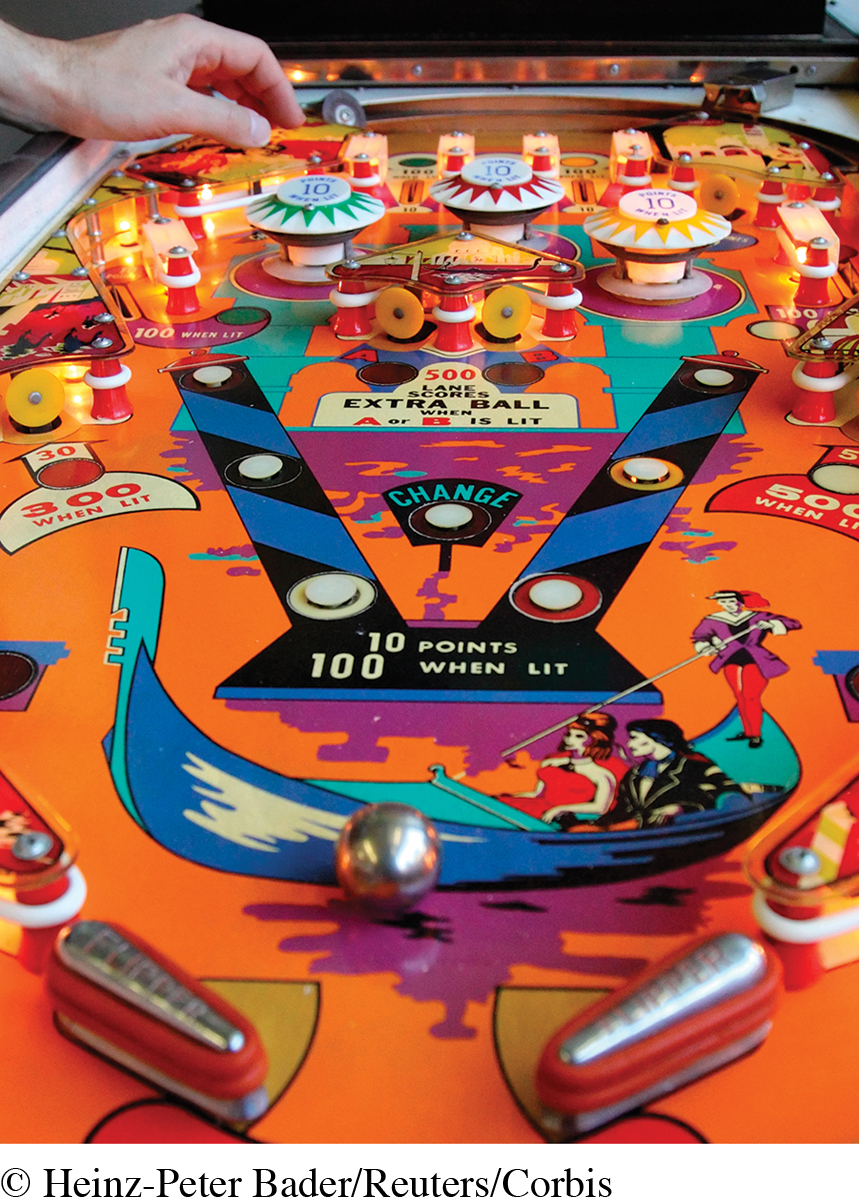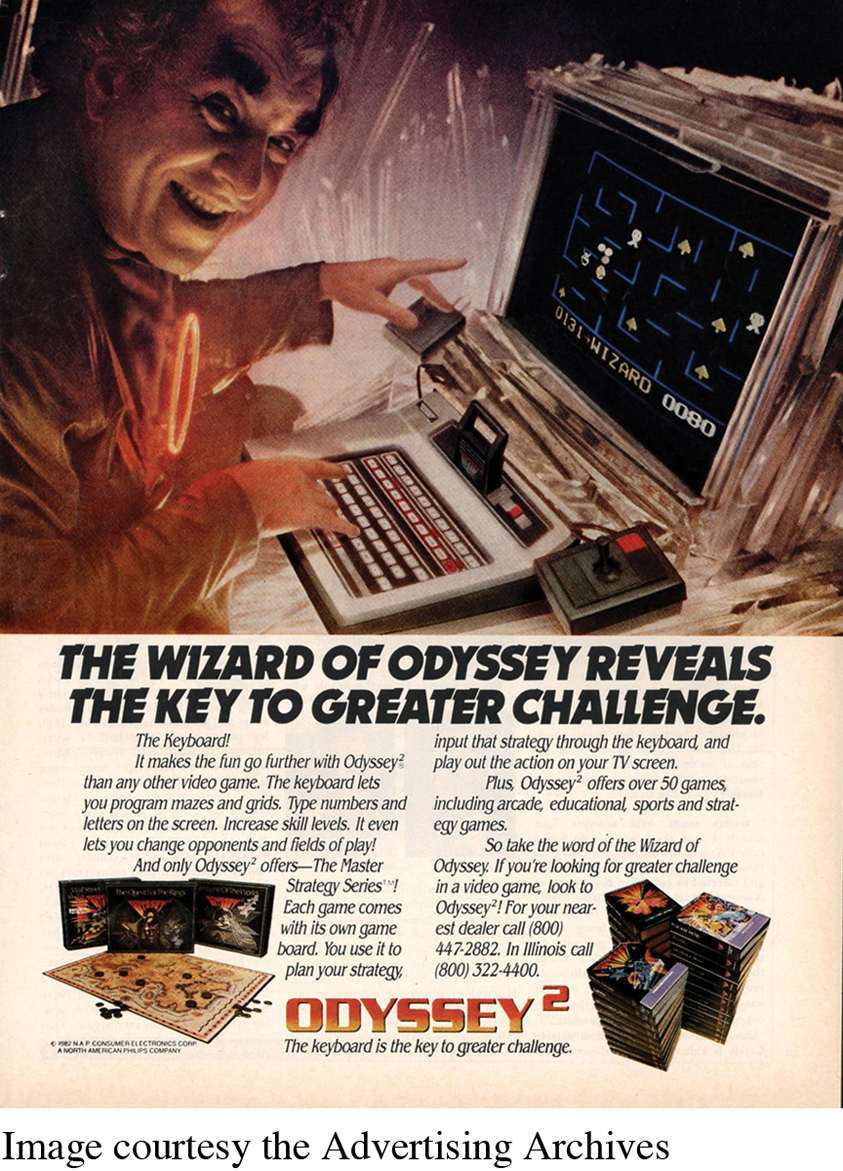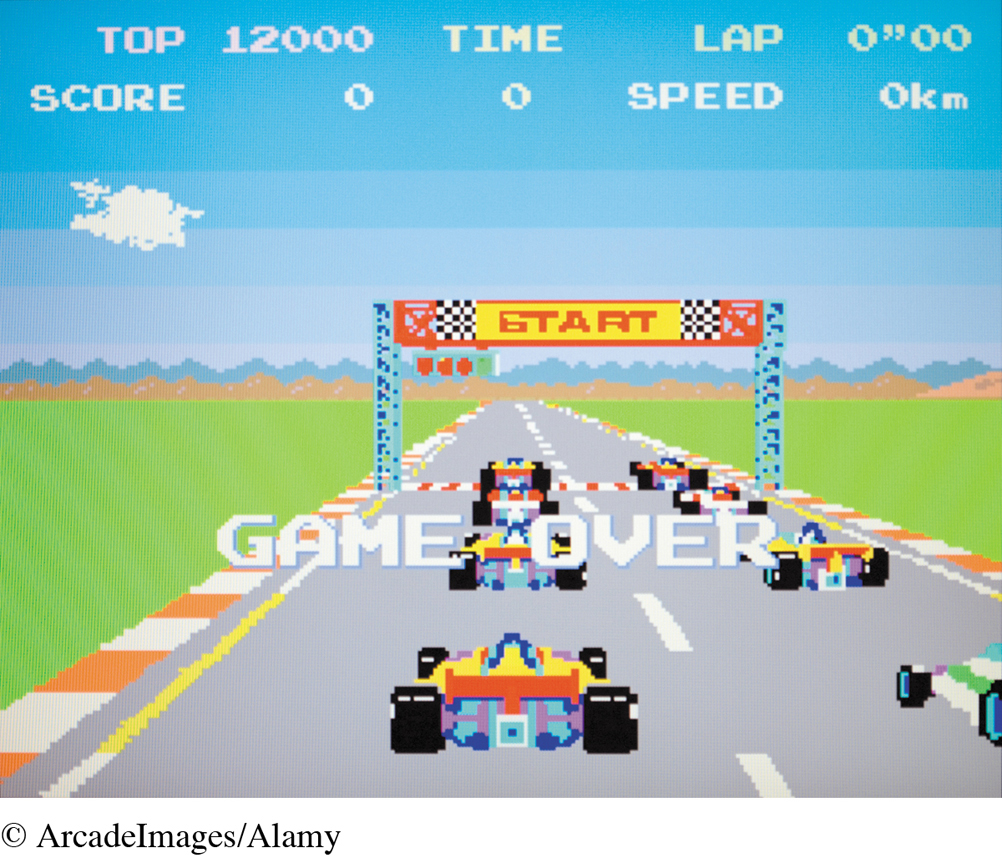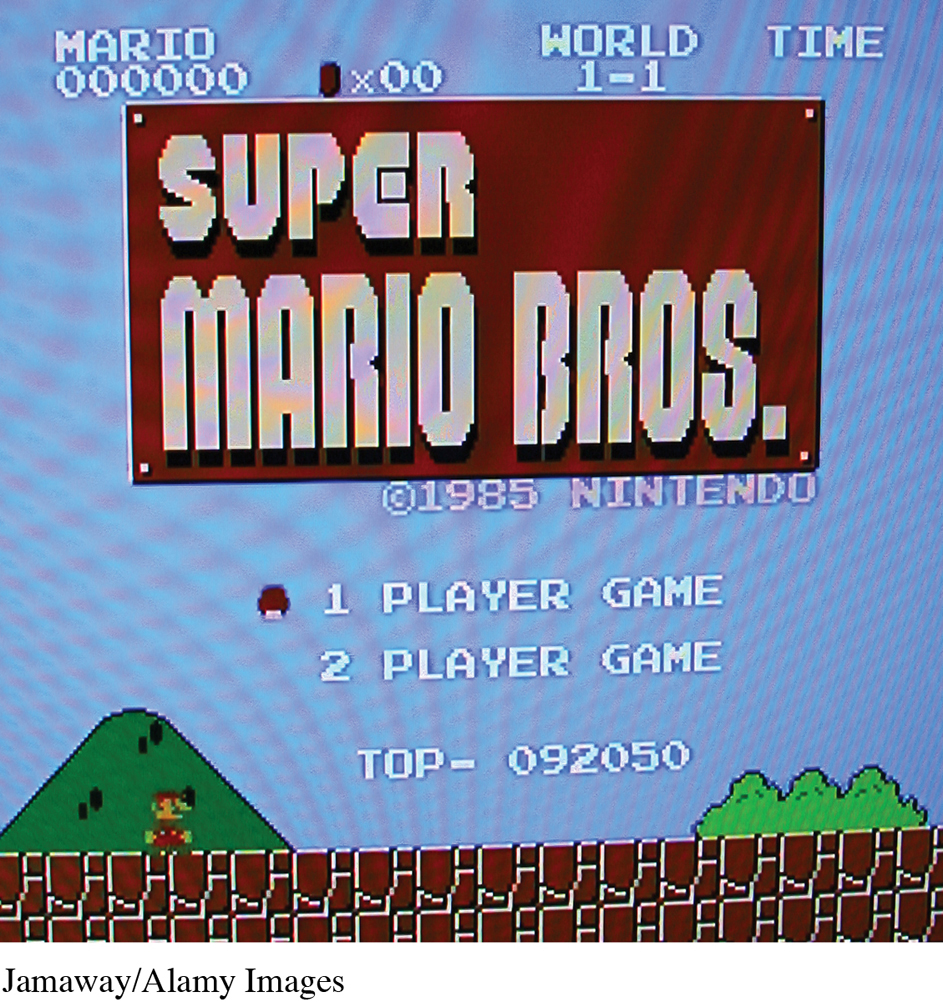The Development of Digital Gaming
When the Industrial Revolution swept Western civilization two centuries ago, the technological advances involved weren’t simply about mass production. They also promoted mass consumption and the emergence of leisure time—both of which created moneymaking opportunities for media makers. By the late nineteenth century, the availability of leisure time had sparked the creation of mechanical games like pinball. Technology continued to grow, and by the 1950s, computer science students in the United States had developed early versions of the video games we know today.
In their most basic form, digital games involve users in an interactive computerized environment where they strive to achieve a desired outcome. These days, most digital games go beyond a simple competition like the 1975 tennis-
But the boundaries were not always so varied. Digital games evolved from their simplest forms in the arcade into four major formats: television, handheld devices, computers, and the Internet. As these formats evolved and graphics advanced, distinctive types of games emerged and became popular. These included action games, sports games, shooter games, family entertainment games, role-
Mechanical Gaming

MODERN GAMING EVENTS and obsessions can be traced back to the emergence of penny arcades in the late nineteenth century. Today, pinball machines remain in many bars and arcades, and pinball expos are held all over the country.
In the 1880s, the seeds of the modern entertainment industry were planted by a series of coin-
Arcades were like nurseries for fledgling forms of amusement that would mature into mass entertainment industries during the twentieth century. For example, automated phonographs used in arcade machines evolved into the jukebox, while the kinetoscope (see Chapter 7) set the stage for the coming wonders of the movies. But the machines most relevant to today’s electronic gaming were more interactive and primitive than the phonograph and kinetoscope. Some were strength testers that dared young men to show off their muscles by punching a boxing bag or arm wrestling a robotlike Uncle Sam. Others required more refined skills and sustained play, such as those that simulated bowling, horse racing, and football.8
Another arcade game, the bagatelle, spawned the pinball machine, the most prominent of the mechanical games. In pinball, players score points by manipulating the path of a metal ball on a playfield in a glass-

Digital Gaming and the Media Playground
The First Video Games

THE ODYSSEY10, a later model of the Odyssey console, was released in 1978 and featured a full keyboard that could be used for educational games.
Not long after the growth of pinball, the first video game patent was issued on December 14, 1948, to Thomas T. Goldsmith and Estle Ray Mann for what they described as a “Cathode Ray Tube Amusement Device.” The invention would not make much of a splash in the history of digital gaming, but it did feature the key component of the first video games: the cathode ray tube (CRT).
CRT-
However, more and more people owned televisions, and this development provided a platform for video games. The first home television game, called Odyssey, was developed by German immigrant and television engineer Ralph Baer. Released by Magnavox in 1972 and sold for a whopping $100, Odyssey used player controllers that moved dots of light around the screen in a twelve-
In the next decade, a ripped-
In 1975, Atari began successfully marketing a home version of Pong through an exclusive deal with Sears. This arrangement established the home video game market. Just two years later, Bushnell started the Chuck E. Cheese pizza–arcade restaurant chain and sold Atari to Warner Communications for an astounding $28 million. Although Atari folded in 1984, plenty of companies—
Arcades and Classic Games

POPULAR ARCADE GAMES in the 1970s and 1980s were simple two-
By the late 1970s and early 1980s, games like Asteroids, Pac-
To play the classic arcade games, as well as many of today’s popular console games, players use controllers like joysticks and buttons to interact with graphical elements on a video screen. With a few notable exceptions (puzzle games like Tetris, for instance), these types of video games require players to identify with a position on the screen. In Pong, this position is represented by an electronic paddle; in Space Invaders, it’s an earthbound shooting position. After Pac-
Consoles and Advancing Graphics

THE ATARI 2600 was followed by the Atari 400, Atari 800, and Atari 5200, but none matched the earlier success of the 2600 model.
Today, many electronic games are played on home consoles, devices specifically used to play video games. These systems have become increasingly more powerful since the appearance of the early Atari consoles in the 1970s. One way of charting the evolution of consoles is to track the number of bits (binary digits) that they can process at one time. The bit rating of a console is a measure of its power at rendering computer graphics. The higher the bit rating, the more detailed and sophisticated the graphics. The Atari 2600, released in 1977, used an 8-
Of course, more detailed graphics have not always replaced simpler games. Nintendo, for example, offers many of its older, classic games for download onto its newest consoles even as updated versions are released, for the nostalgic gamers as well as new fans. Perhaps the best example of enduring games is the Super Mario Bros. series. Created by Nintendo mainstay Shigeru Miyamoto in 1983, the original Mario Bros. game began in arcades. The 1985 sequel Super Mario Bros., developed for the 8-
Through decades of ups and downs in the electronic gaming industry (Atari folded in 1984, and Sega no longer makes video consoles), three major home console makers now compete for gamers: Nintendo, Sony, and Microsoft. Nintendo has been making consoles since the 1980s; Sony and Microsoft came later, but both companies were already major media conglomerates and thus well positioned to support and promote their interests in the video game market.
Nintendo released a new kind of console, the Wii, in 2006. The device supported traditional video games like New Super Mario Bros. However, it was the first of the three major consoles to add a wireless motion-
Veteran electronics manufacturer Sony has the PlayStation series, introduced in 1994. Its current console, the PlayStation 4 (PS4, launched in 2013), boasts more than 150 million users on its free online PlayStation Network. Sony’s PlayStation Plus is a paid subscription service that adds additional features, such as game downloads, to the PlayStation Network. Sony introduced PlayStation Move, its handheld remote motion-
Microsoft’s first foray into video game consoles was the Xbox, released in 2001; it was linked to the Xbox LIVE online service in 2002 and released as Xbox 360 in 2005. Xbox LIVE lets its 48 million subscribers play online and enables users to download new content directly to its console. In 2013, Microsoft released the Xbox One, with an upgraded Kinect (a motion-
Each of the three major digital game consoles has its niche. Sony’s PlayStation is mostly about gaming, although like the other two consoles, it offers television entertainment features. Microsoft’s Xbox is also about gaming, but Microsoft wants its console to be the entertainment hub of the house. Wii features more devices and family-
Although the major consoles share some game content, not every popular game is multiplatform (that is, one that is released on all three platforms)—so game offerings become a major selling point for a particular system. For example, Destiny (by Activision Blizzard), Assassin’s Creed IV: Black Flag (by Ubisoft), and Child of Light (by Ubisoft) come in versions for all three consoles (and personal computers running Microsoft Windows, too). But the console makers also create or license games just for their own platform: Titanfall and Halo 5: Guardians for the Xbox One, inFAMOUS Second Son for the PlayStation 4, and Mario Kart 8 for the Wii.

THE ORIGINAL MARIO BROS. GAME made its arcade debut in 1983, but it was the 1985 home console sequel Super Mario Bros. that made the series a household name. Super Mario titles have been developed for the original Nintendo, Super Nintendo, Nintendo 64, GameCube, Game Boy, Wii, and 3DS, for which Super Mario Bros. 3 was released in 2014.
Gaming on Home Computers
Like the early console games, very early home computer games often mimicked (and sometimes ripped off) popular arcade games, like Frogger, Centipede, Pac-
As consoles caught up with greater processing speeds and disc-

DOOM, an early first-